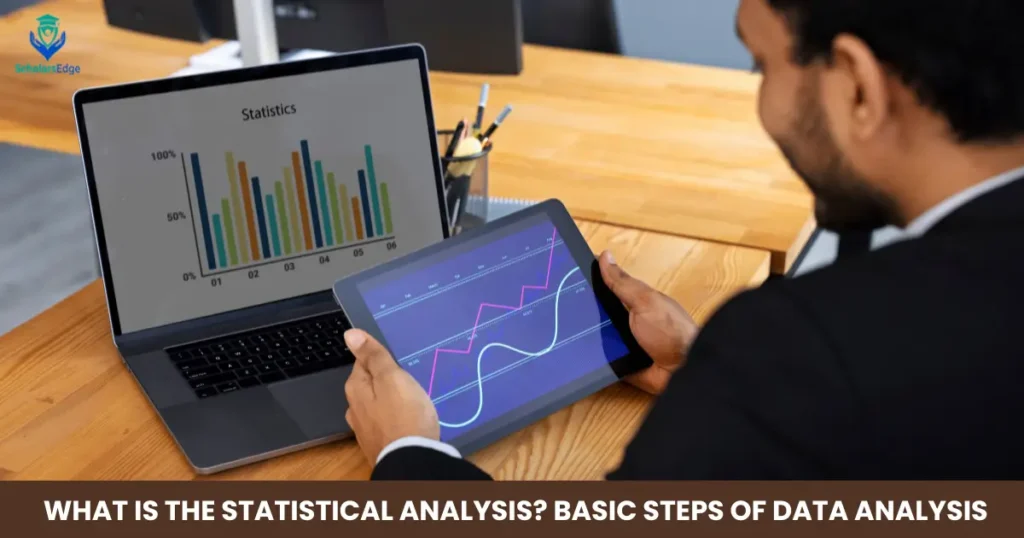
Introduction
In today’s research landscape, data has become a cornerstone for evidence-based decision-making. As researchers delve into complex questions, the ability to analyze data accurately is essential for drawing valid conclusions. Whether you’re testing hypotheses, exploring relationships between variables, or forecasting outcomes, data-driven research requires robust methodologies to ensure that findings are reliable and meaningful.
Statistical analysis is a fundamental tool in this process, serving as the backbone for interpreting research data. It involves the application of mathematical principles to organize, analyze, and interpret data sets, helping researchers derive actionable insights. Without statistical analysis, vast amounts of raw data would remain difficult to understand, limiting a researcher’s ability to test theories and answer critical questions.
In disciplines ranging from social sciences and biology to economics and engineering, statistical methods are indispensable. For instance, in healthcare research, statistical techniques are used to assess the effectiveness of treatments, while in environmental studies, they help track climate change trends. Fields like education, public policy, and psychology also rely heavily on statistical analysis to understand complex human behaviors and societal patterns. As a Ph.D. researcher, mastering the basic steps of data analysis can greatly enhance the rigor and impact of your work, allowing you to contribute valuable knowledge to your field.
What is Statistical Analysis?
Statistical analysis involves the use of mathematical methods to analyze and interpret data in order to extract insights. For researchers, it provides a structured approach to summarizing, exploring, and testing data.
There are two primary types of statistical analysis: descriptive statistics and inferential statistics. Descriptive statistics focus on summarizing the main characteristics of a data set, such as calculating means, medians, standard deviations, or generating frequency distributions. These methods provide a clear overview of the data, allowing researchers to identify patterns or trends at a glance.
On the other hand, inferential statistics extend beyond description. Using techniques such as hypothesis testing, regression analysis, and confidence intervals, inferential statistics allow researchers to make predictions or generalizations about a larger population based on a sample of data. This is particularly valuable in research studies where it’s impractical to collect data from every individual or case.
Common Data Analysis Techniques
Data analysis employs several techniques to interpret and extract insights from datasets. These methods vary depending on the type of data and the research objectives.
Descriptive analysis is one of the most common methods, focusing on summarizing the key features of a dataset. It includes calculating measures like the mean, median, mode, and standard deviation to provide an overall picture of the data’s distribution and variability.
Inferential analysis allows researchers to make predictions or inferences about a larger population based on a sample. Techniques such as hypothesis testing and regression analysis are frequently used to determine relationships between variables and to assess the statistical significance of findings.
Exploratory data analysis (EDA) involves visually inspecting data to uncover patterns, trends, or outliers. Through methods like scatter plots, histograms, and box plots, EDA helps researchers form hypotheses and better understand the structure of the data before performing more complex analyses.
Predictive analysis leverages historical data to forecast future trends or outcomes. Techniques like time-series analysis and machine learning models are often used to predict events such as market behavior or disease progression.
Selecting the appropriate data analysis technique is critical and should align with the research questions and objectives. Using the wrong method can lead to inaccurate conclusions, whereas the right approach provides meaningful and actionable insights.
Basic Steps of Data Analysis
A step-by-step guide through the data analysis process:
Step 1: Define the Research Question or Problem
- Importance of having a clear objective before beginning data analysis.
Step 2: Collect Data
- Explain different ways data can be collected (surveys, experiments, observations).
- Emphasize the need for accurate, reliable, and sufficient data.
Step 3: Clean the Data
- Discuss common data issues (missing data, duplicates, outliers).
- Importance of preparing data for analysis by ensuring it is clean and error-free.
Step 4: Analyze the Data
- Applying the chosen data analysis techniques to interpret the data.
- Explain how different methods are used depending on the research question and data type.
Step 5: Interpret the Results
- Explain how results from the analysis are translated into actionable insights.
- Understanding the significance of statistical findings (confidence intervals, p-values, etc.).
Step 6: Present and Communicate the Findings
- Importance of clear communication of the results (tables, graphs, reports).
- Tips on effective presentation of data analysis outcomes to non-technical stakeholders.
Key Data Analysis Tools and Software
Several tools are widely used in data analysis, each offering unique capabilities for different types of research. Excel is one of the most accessible tools for basic data analysis, offering functions like pivot tables, charts, and basic statistical calculations. It’s ideal for small datasets and straightforward analyses.
For more advanced statistical work, SPSS (Statistical Package for the Social Sciences) is highly regarded, especially in social science research. It offers a range of statistical tests, making it suitable for inferential and descriptive analysis.
R and Python are powerful programming languages that provide extensive libraries and packages for data analysis, visualization, and machine learning. R is particularly strong in statistical computing and data visualization, while Python is favored for its flexibility and integration with various data analysis and machine learning frameworks. Tools like Pandas and NumPy in Python simplify complex operations, while ggplot2 and dplyr in R help with data manipulation and visualization.
Specialized software and automation tools are also gaining popularity. Platforms like Tableau and Power BI allow for automated data visualization and reporting, making it easier for researchers to present their findings without manual effort.
Common Challenges in Data Analysis
Data analysis presents several challenges, including issues with data quality. Only complete or consistent data can lead to accurate results, so cleaning and preprocessing are critical steps in the process. Another major concern is bias, which can distort findings if the data sample isn’t representative of the population.
Interpretation errors are also common, particularly when researchers misapply statistical methods or draw incorrect conclusions from the data. To mitigate these challenges, peer reviews and rigorous validation procedures are essential. Additionally, using reliable data sources and ensuring transparency in the analysis process can help reduce errors and improve the overall quality of the research findings.
Conclusion
Statistical analysis is a vital tool for informed decision-making, allowing researchers and organizations to derive meaningful insights from data. By following a systematic approach—from defining research questions to interpreting results—researchers can ensure the accuracy and relevance of their findings. As industries continue to generate vast amounts of data, the role of data analysis will only grow in importance, driving innovation and improving decision-making across various sectors. For Ph.D. researchers, mastering these techniques is essential for producing high-quality, impactful research. As data-driven insights become central to shaping future strategies, the demand for rigorous data analysis methods will continue to expand, offering new opportunities for discovery and application.
FAQs
What is the purpose of statistical analysis?
The purpose of statistical analysis is to organize, interpret, and derive insights from data. It helps researchers identify patterns, trends, and relationships that may take time to be obvious. By applying statistical methods, researchers can make informed decisions, test hypotheses, and draw conclusions based on evidence. This is essential for ensuring that findings are reliable and not based on guesswork, especially in fields like science, healthcare, economics, and social research, where accurate data interpretation is crucial for advancing knowledge and solving real-world problems.
What is statistical analysis?
Statistical analysis is a mathematical process used to examine, summarize, and interpret data. It involves applying statistical techniques to identify patterns, relationships, and trends within datasets. This can be done through methods like descriptive statistics, which summarize data (e.g., mean, median), or inferential statistics, which allow researchers to make predictions or generalizations about larger populations based on sample data. Statistical analysis is widely used in research and business to inform decisions, test theories, and support evidence-based conclusions.
What is data analysis in research methodology?
Data analysis in research methodology refers to the systematic approach used to collect, process, and interpret data in order to answer research questions. It involves cleaning and organizing data, applying appropriate statistical techniques, and summarizing the results to draw meaningful conclusions. This process helps researchers test hypotheses, identify correlations, and provide evidence to support their findings. Data analysis is critical for ensuring that research results are accurate, reproducible, and relevant to the study’s objectives, playing a fundamental role in advancing scientific knowledge.
